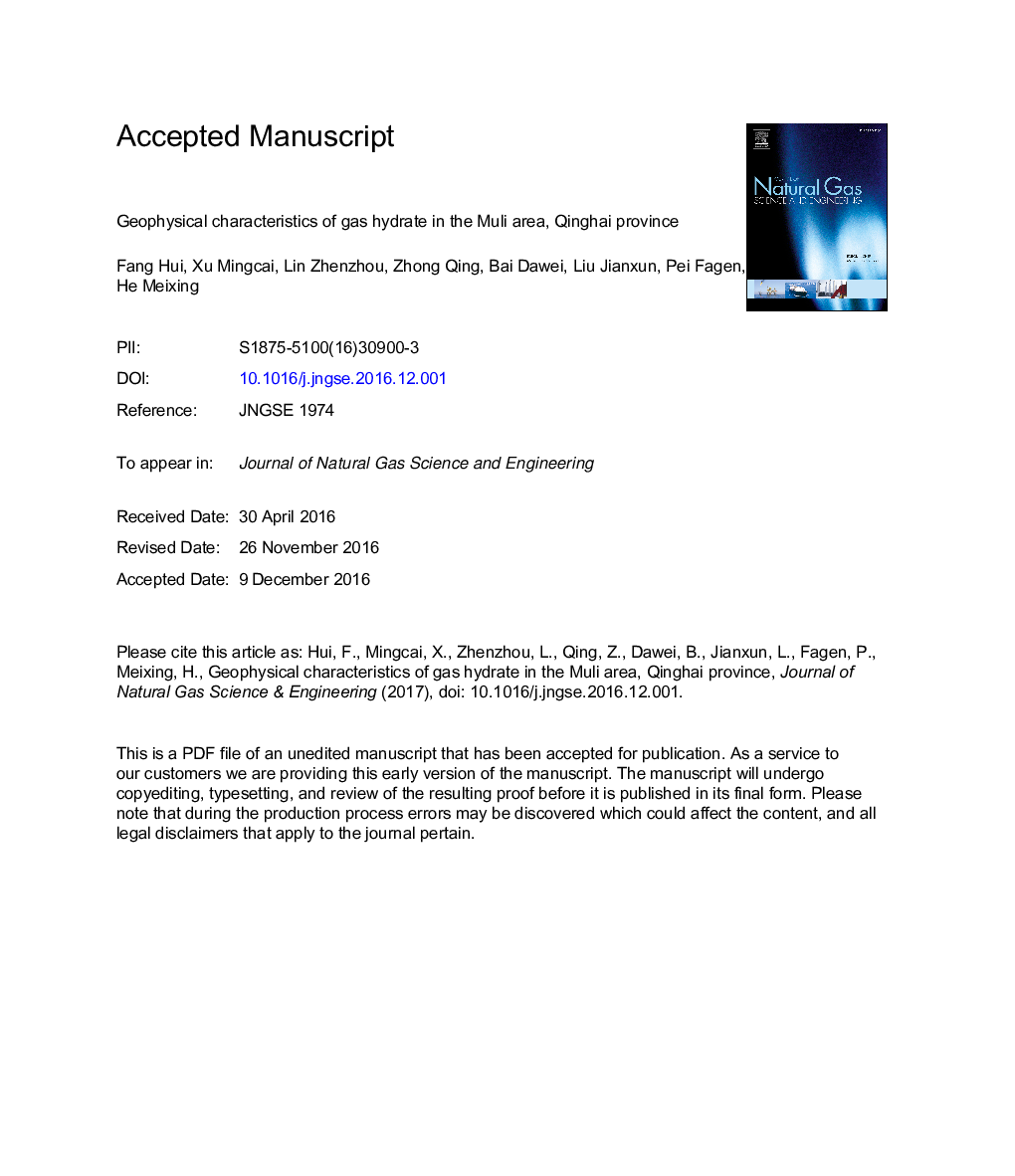| Article ID | Journal | Published Year | Pages | File Type |
|---|---|---|---|---|
| 5485243 | Journal of Natural Gas Science and Engineering | 2017 | 18 Pages |
Abstract
The Muli area is the only region where gas hydrates have been found in the mid-latitude permafrost regions of the world. The use of geophysical method and certain geophysical parameters have a strong predominance in identifying gas hydrates and optimizing the effective gas hydrate detection methods in hard rock permafrost areas. Since 2009, a series of tests has been performed in the Muli area, including seismic reflection and electromagnetic methods, and integrated geophysical well logging. The results show the presence of three types of gas hydrate reservoir, namely sandstone pore, mudstone fracture, and shale fracture types, with each showing a different well logging response. The gas hydrate reservoirs in the Muli area are characterized by high frequency and weak amplitude on the two-dimensional seismic profiles, and high horizontal resistivity on the electrical sections. The geophysical characteristics are complex, particularly as a result of the specific environments of gas hydrate reservoirs. These characteristics can be used to estimate the type and distribution of the gas hydrate reservoir, and to improve gas recovery rates by directing preliminary exploration.
Keywords
Related Topics
Physical Sciences and Engineering
Earth and Planetary Sciences
Earth and Planetary Sciences (General)
Authors
Hui Fang, Mingcai Xu, Zhenzhou Lin, Qing Zhong, Dawei Bai, Jianxun Liu, Fagen Pei, Meixing He,
